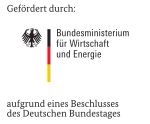Choosing the Right CMS
All of the open-source Content Management Systems (OS-CMS) introduced here offer characteristics and possibilities that will not be further entered into here:
- They are based on open-source software. Those who anderstand the programming language can can understand in detail what the software does. As a result, among other things, security vulnerabilities are recognizable. And because of this, these vulnerabilites are discovered quickly and patched.
- The "communities"that have built up around the individual systems – generally from several hundred to tens of thousands of people that are occupied with further development and adaptation – therefore represent at the same time the "provider". If you use these systems, you are not dependent on a single company and its update plan or service modle, but can in principle call on tens to hundreds of service providers in your own country, in order, for example, to have individual adjustments made, or to get it connected to an external system.
- Most OS-CMS (and all of those introduced here) are based on a database, and typically use MySQL, but also other standard formats. Professional Internet service providers maintain such dataabases,so normally, you won't need to worry about this.
- All systems can be downloaded free of charge and theoretiscally can be re-written at any time (even though this is not necessarily to be recommended). All systems can be extended through additional modules – depending on the CMS, these are called "Plugins", "Extensions", "Add-ons", "Modules" etc.. These program extensions provide additional closed functions, for example, a form builder or a picture gallery. There are also additional basic designs for every system, which, depending on the system, are called "Design", "Theme", "Skin", or "Template“.
- You do not need to separately request HTML5, CSS3 and UTF-8 support. Open-source systems noremally react faster than proprietary systems to new technological demands. If these terms mean nothing to you, you can rub them out of your notebook again. The systems support modern technologies. And that's all there is to it.
- Editing content takes place over a browser. There is no special browser required, but in your own interestes, you could check to see whether your browser is up-to-date.
- Use is, according to all communities, "intuitive" and content can be "published quickly". You also have control over the placement and equipping of menus. In one way or another, you can see in the backend filterable content overviews and can compile content automatically (e.g. sorting teasers according to recency). The more specific you formulate your „msu-haves“ , the easier it will be for you to choose the right CMS for your requirements.
- Even though these systems are all available for free: It is better not to assume that your CMS will remain free of charge. It either costs you your own time or that of paid professionals, who generally achieve the desired result faster. Not only in the set-up/configuration. At the latest when it comes to ensuring regular security updates, having a service provider is an advantage.
No website will be able to tell you straight out which CMS would be the best, because it's a queston of how well each system can fulfill your particular needs. If in doubt, Sseek the advice of a specialist during the decision-making phase. This being the case, the following descriptions can only provide guidance for a preselection:


